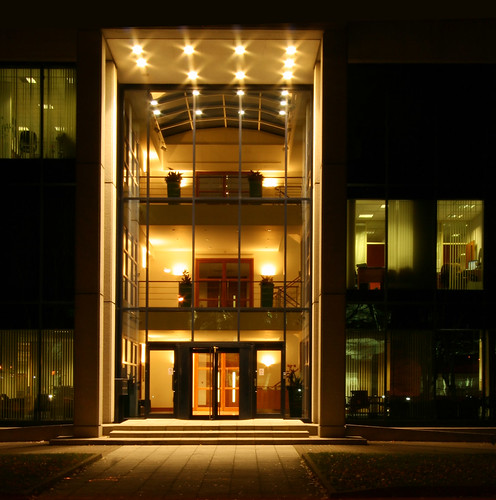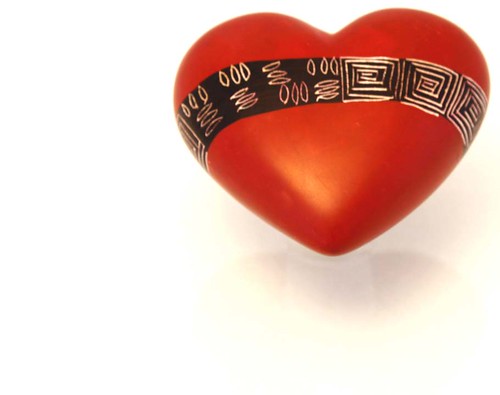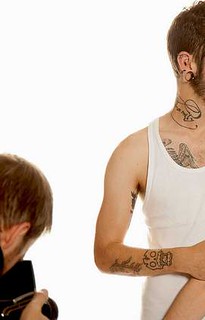
• Tall Entrance •
What is the nature of darkness?
Click image to view large.
• Tall Entrance • By Netkonnexion on Flickr ![]()
Of darkness and the essence of photography.
Dark is an obvious candidate to be the opposite to light. But is it in real terms the opposite of light? Darkness clearly makes for significant food for thought. Here are some ways to think about darkness with respect to cameras.
Darkness is the absence of light…
Er… no. It is easy to say that dark is the opposite of light. However, it clearly is not, because a shot like the one above successfully portrays the light as well as the dark in close proximity. Well… that depends how you see it. Or rather, that depends on how the camera sees it.
I cheated – slightly. The image was underexposed in the digital developing to accentuate the essence of the lights in the entrance. That prevented them blowing out, over-exposing the area surrounding them. It would have been easy to blow out large areas of the internal walls with bright patches of white. The cream colour in the entrance allowed me to keep the brightness down and still preserve the true colours. This would have been difficult in a long exposure with whites as the wall colour. The whites would have made the range of brights-to-darks too much for my camera. Details would have been lost at the ends of the light range (in the blacks and whites).
The cream paint in the entrance, and the tungsten lights gave me flexibility. It allowed me to keep most of the light and dark areas within the dynamic range of the camera. In other words, the camera could see both blacks and whites without losing detail in the important part of the image. Remember a camera will normally only work within a narrow range of light. Typically a (good) camera will be able to see (at maximum) across a range of between 8 and 12 stops of light. Not all that will be visible in the final photo – some detail will be lost depending on the display media. Using RAW will help you bring out lost detail but depending on the camera you may get digital noise. Nevertheless, about twelve stops of light will be retained in the data. Which allows a certain amount of editing freedom (in RAW).
What you need to do is make sure that the exposure captures the light intensity you intend as the focus of your image. I could have exposed to brighten the side windows. That would have made the entrance too bright (and blown out). However, I chose to expose for the brighter central entrance area, but lost the brightness in the side windows. I did that because I had a picture in my head of what I wanted to be the visual focal point of my picture – the entrance.
This picture shows us that darkness in photography is different to that which we see with our eyes. Understanding the nature of exposure helped me to spot that the light in the entrance could be contained within the range my camera could see. Although, a lot of detail has still been lost in the blacks. The darkness in this picture is an artificial creation of my cameras inability to see a wide range of light. Even to our eyes, darkness is relative to our eyesight and its ability to see contrasts.
The essence of photography is…
With this type of shot you need a clear idea in your head of what you want to produce. Also you need an idea of what the camera can do – it does not see the scene as you do. So, before you press the button you need to have clearly formulated your vision of the finished shot. You need to think your image into existence before pressing the button.
Great images are produced long before the shutter button is pressed. The ultimate aim of photography is to conjure up a vivid representation of the scene in the viewers mind. The essence of the act of photography is to create that before you take the shot. If you can do it you will truly be making images instead of taking pictures.



